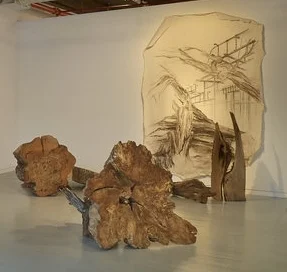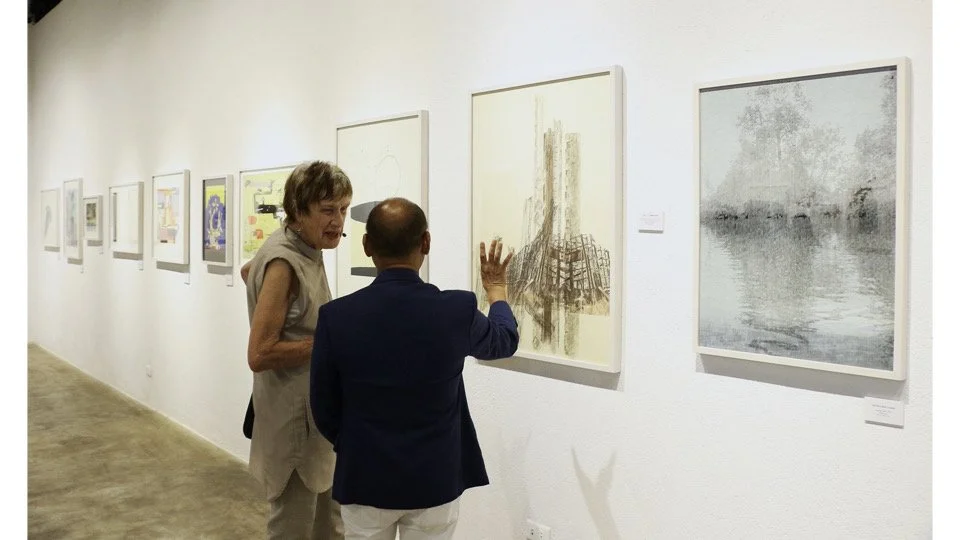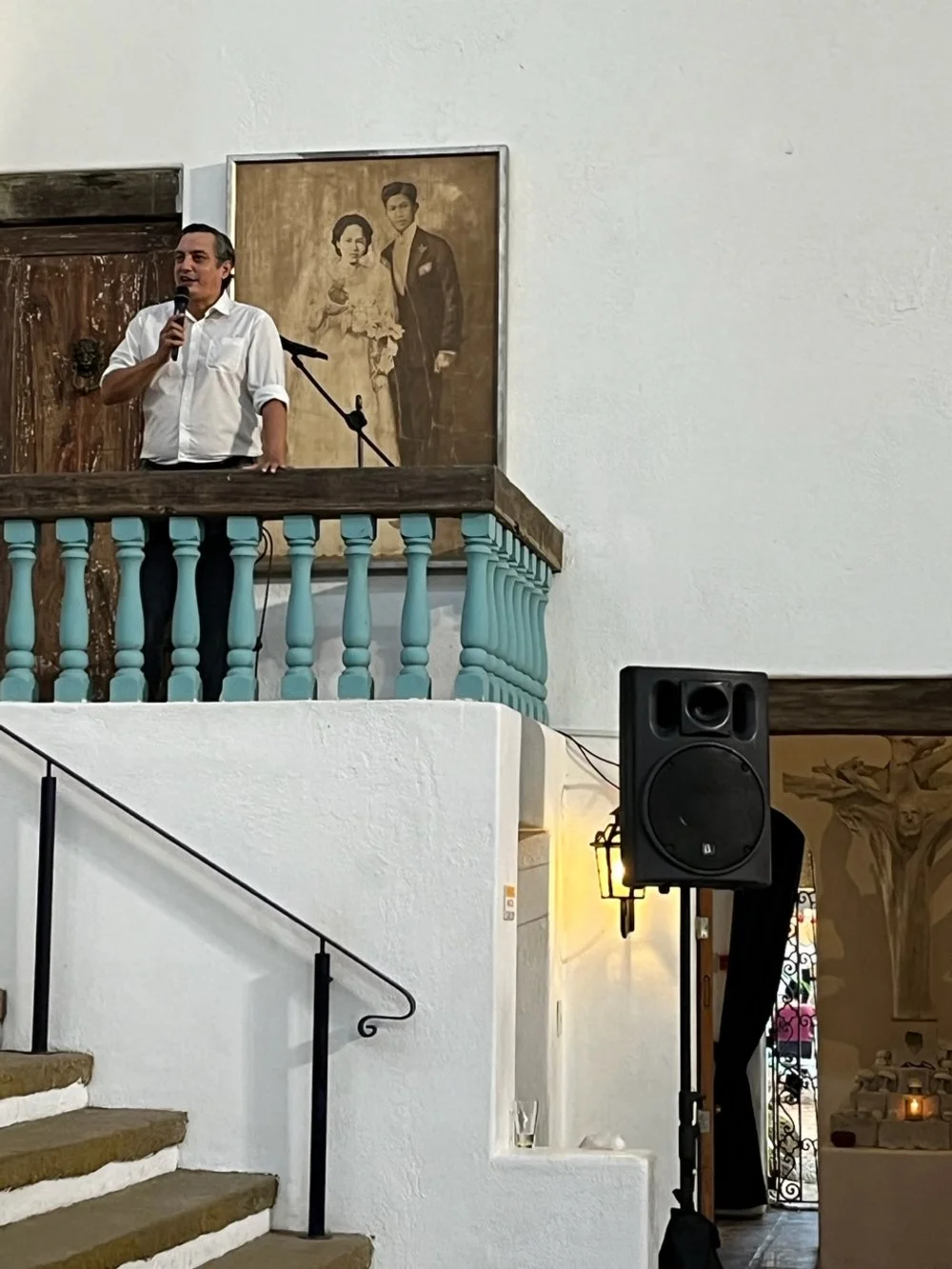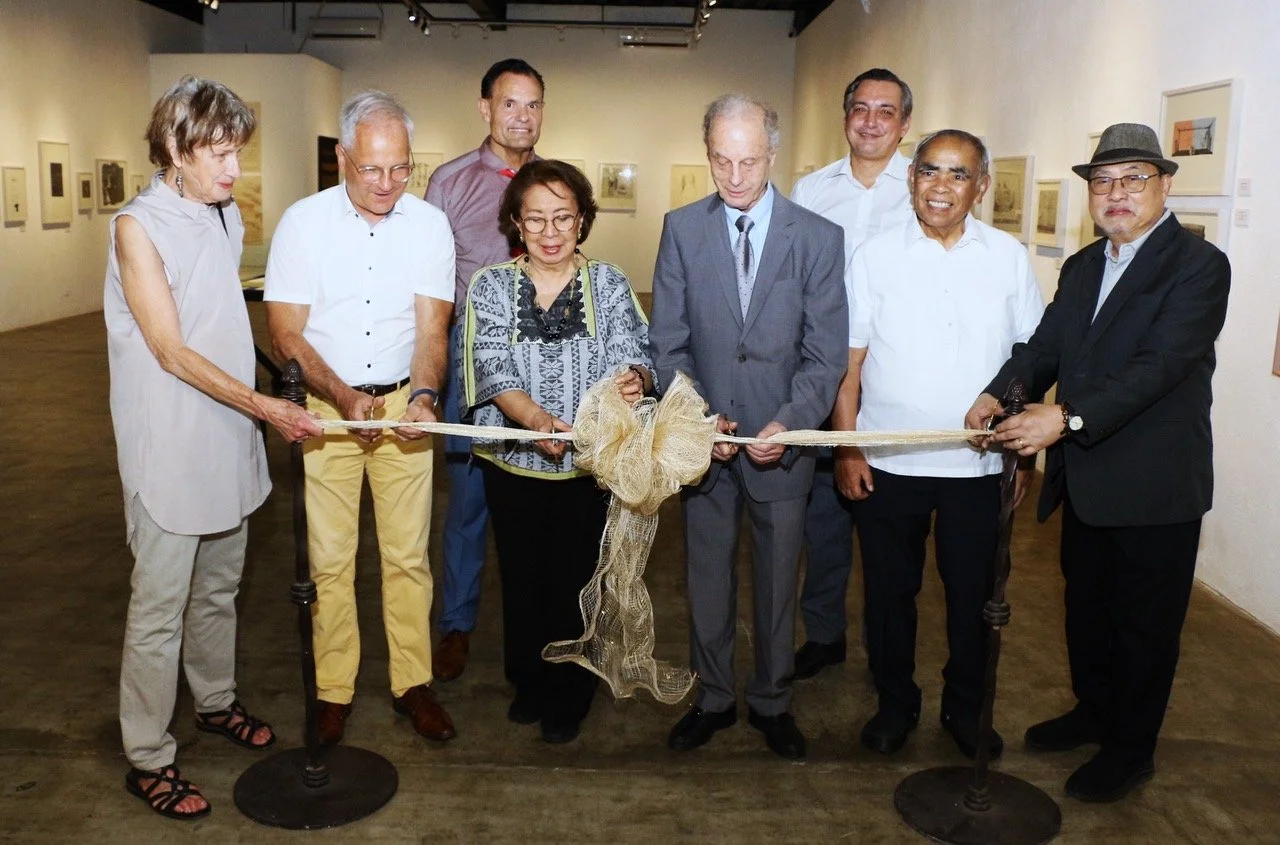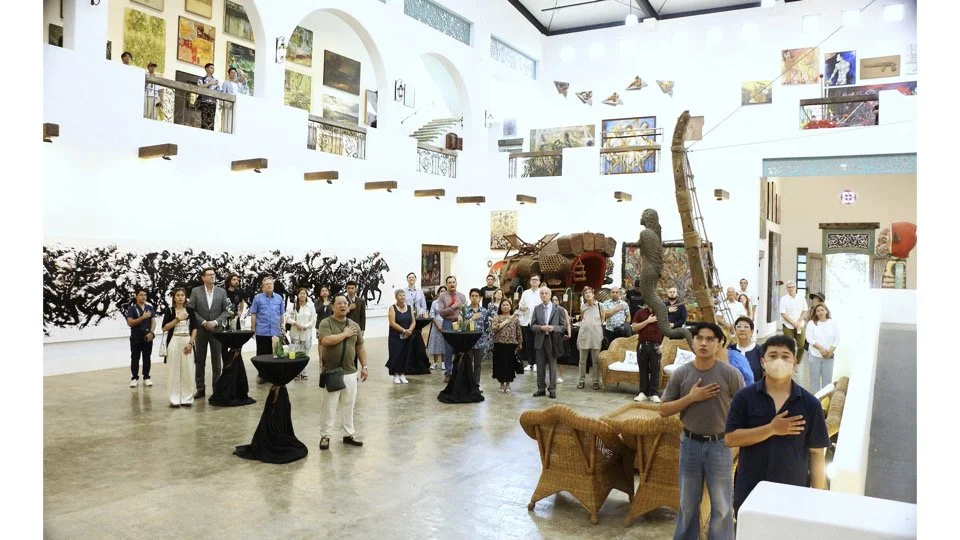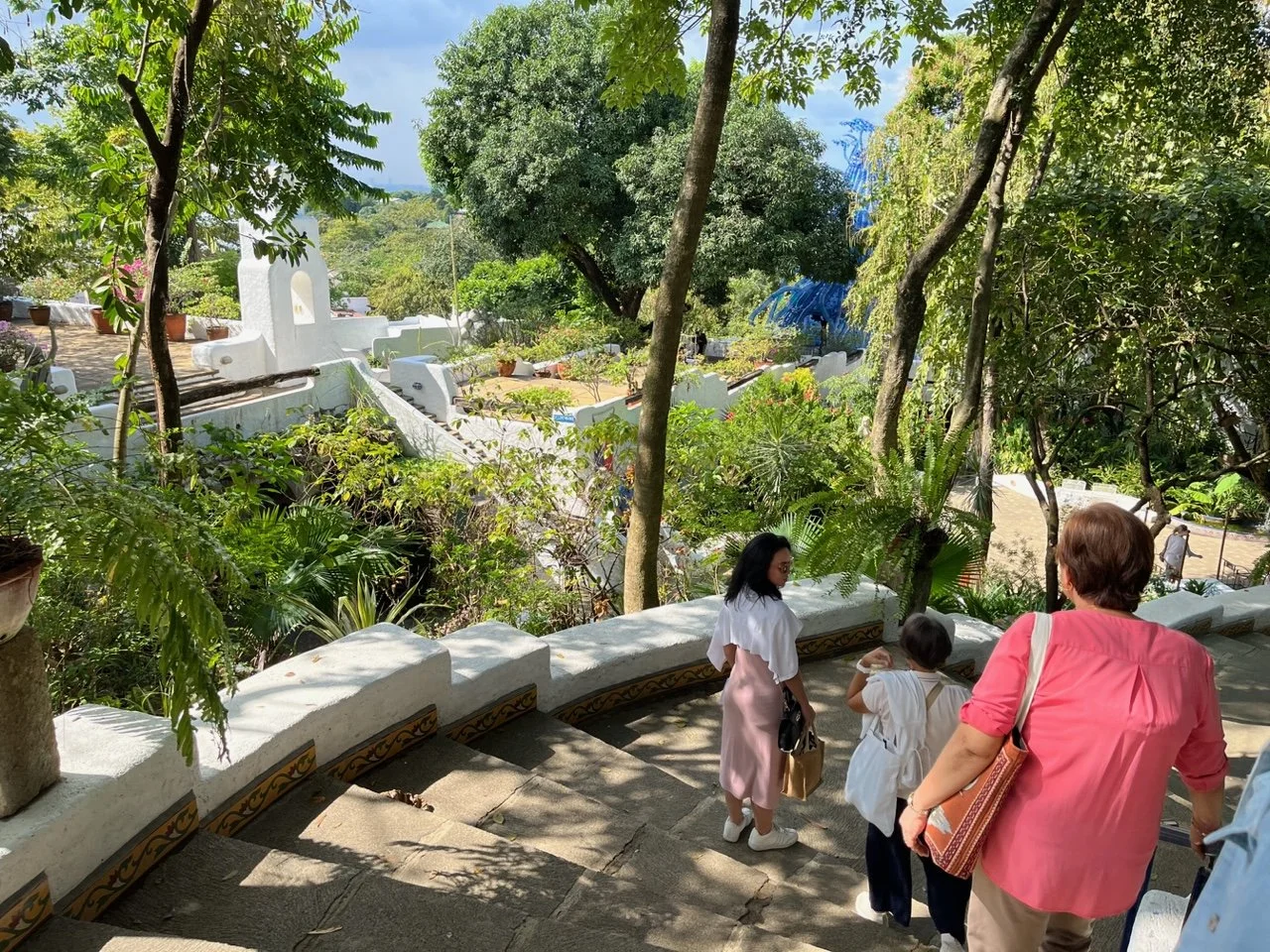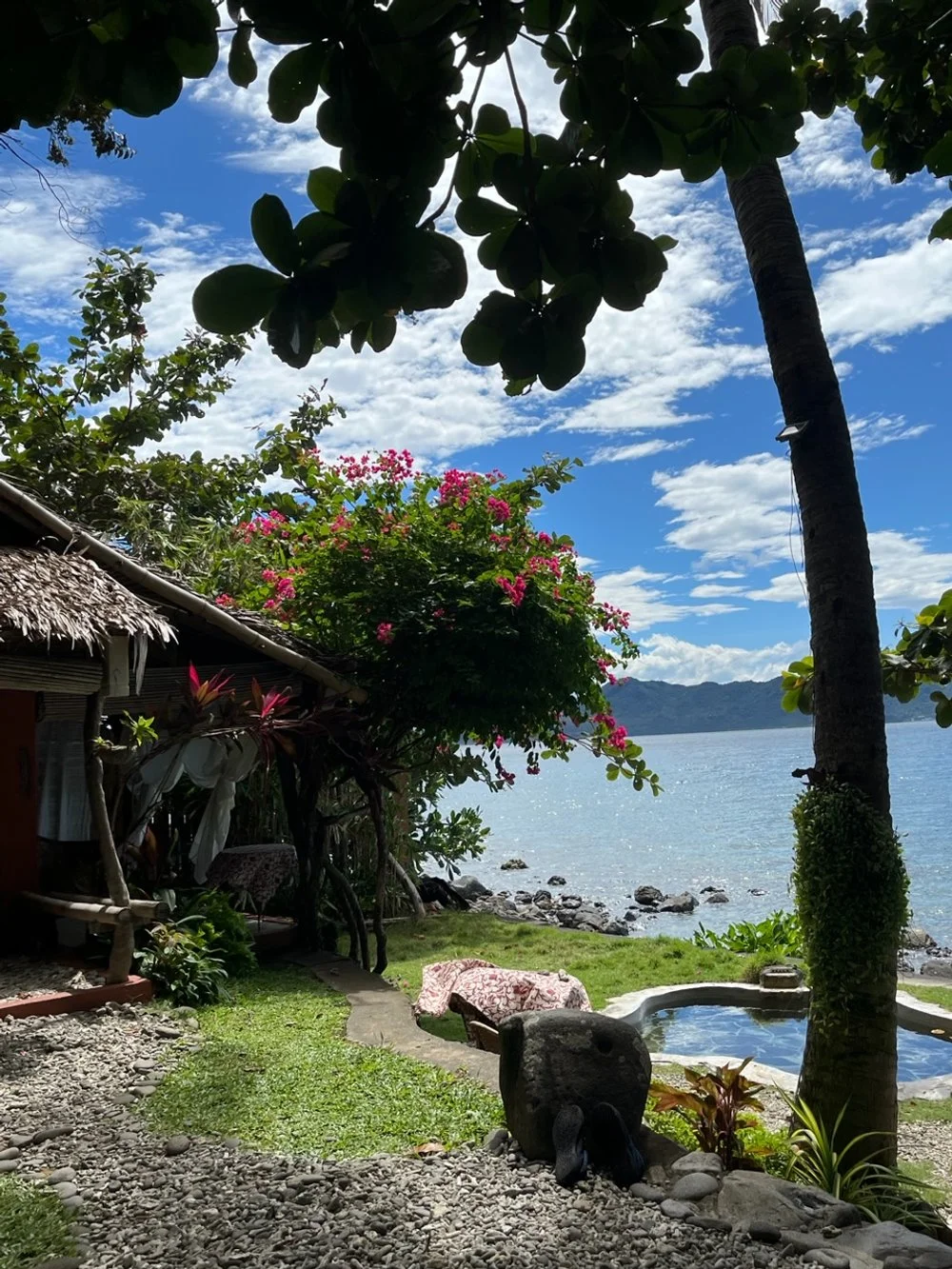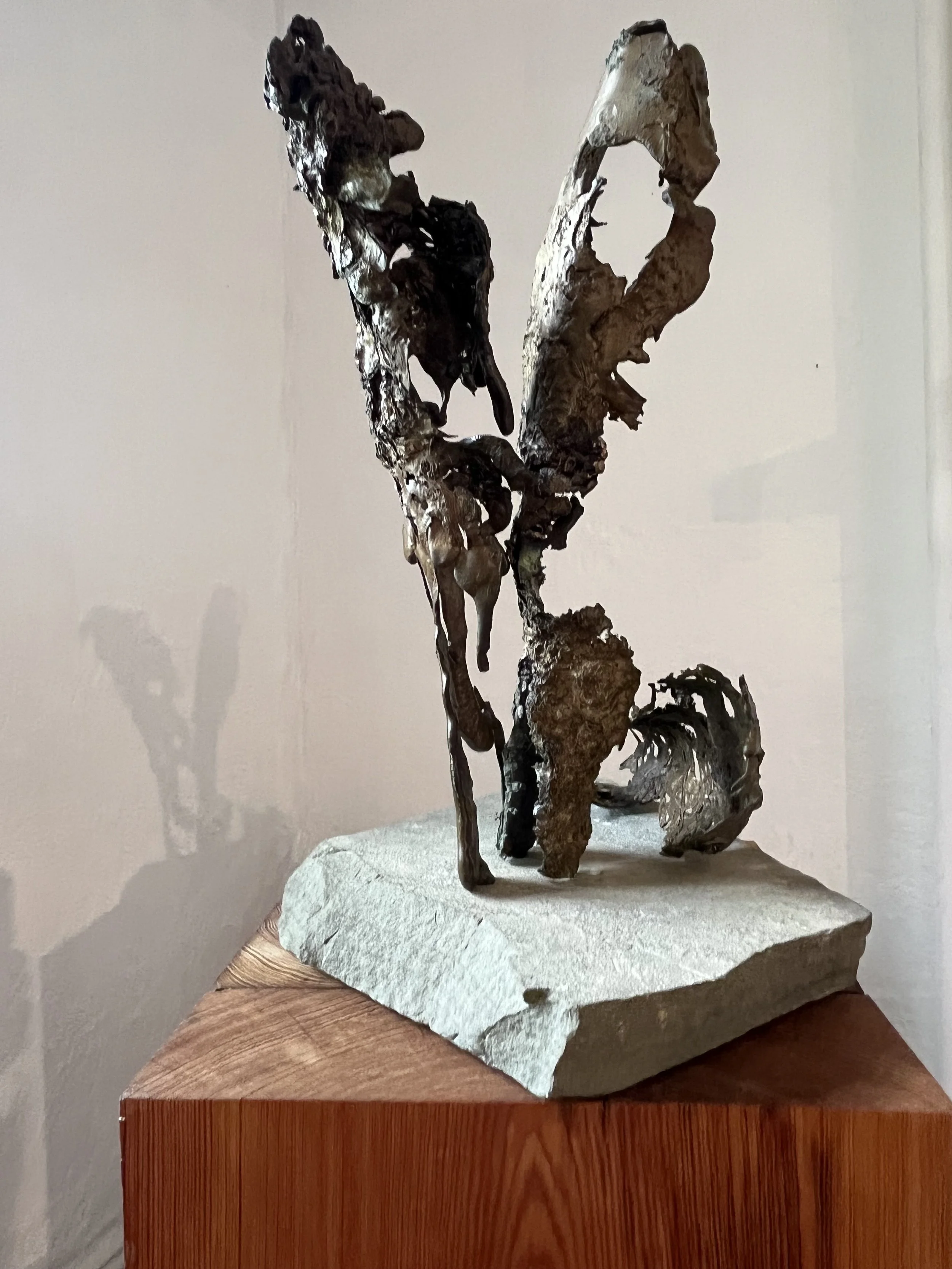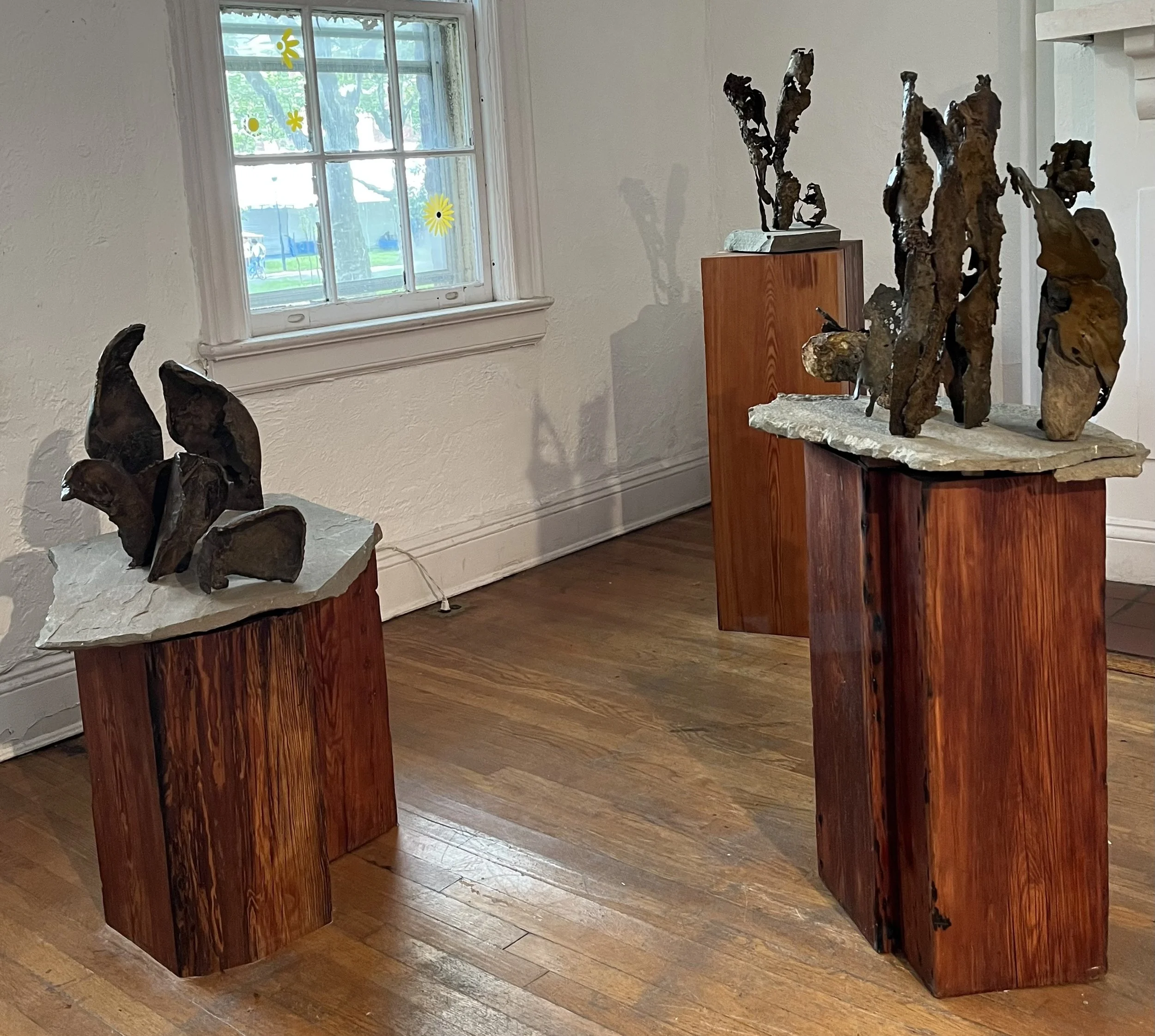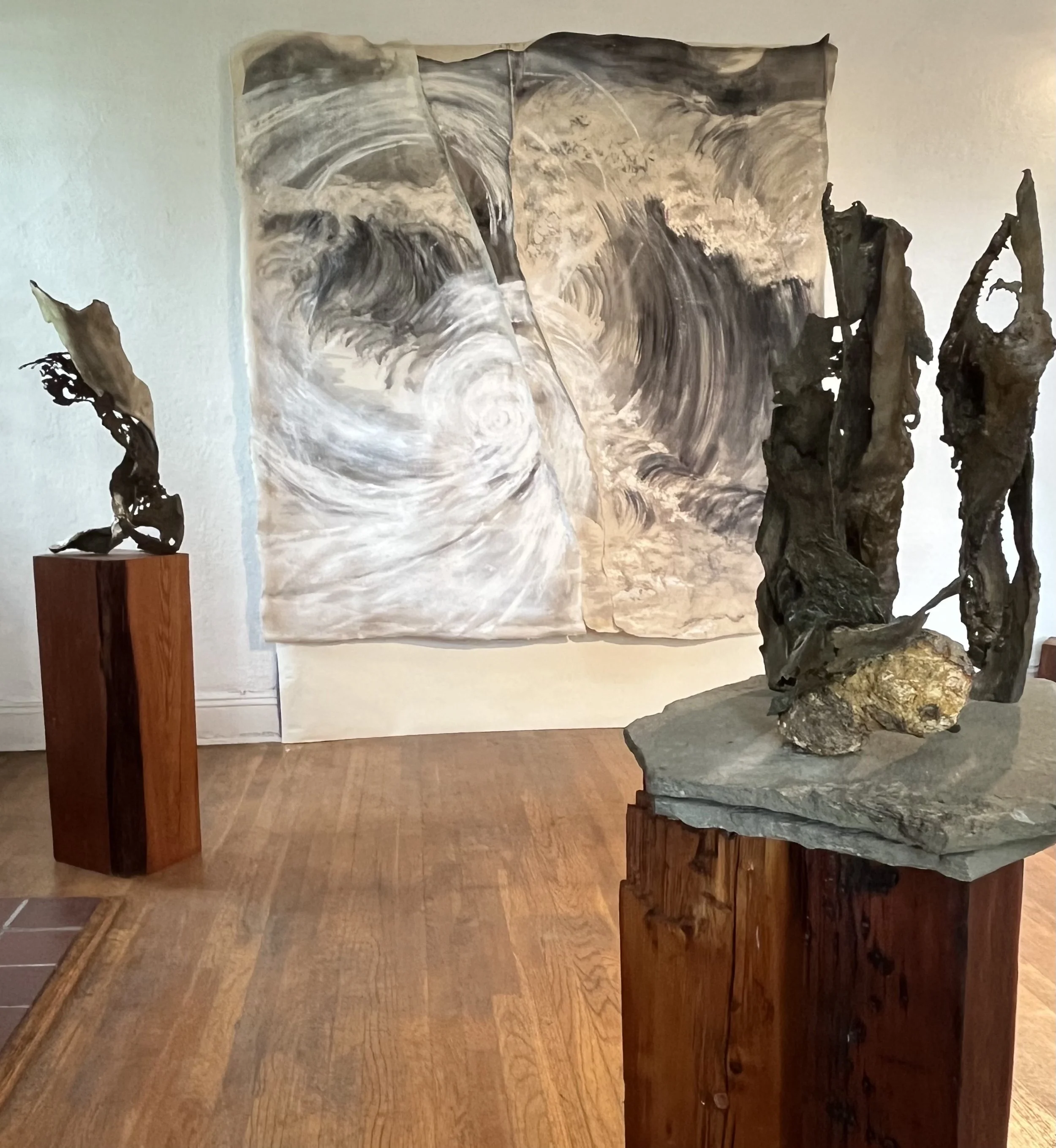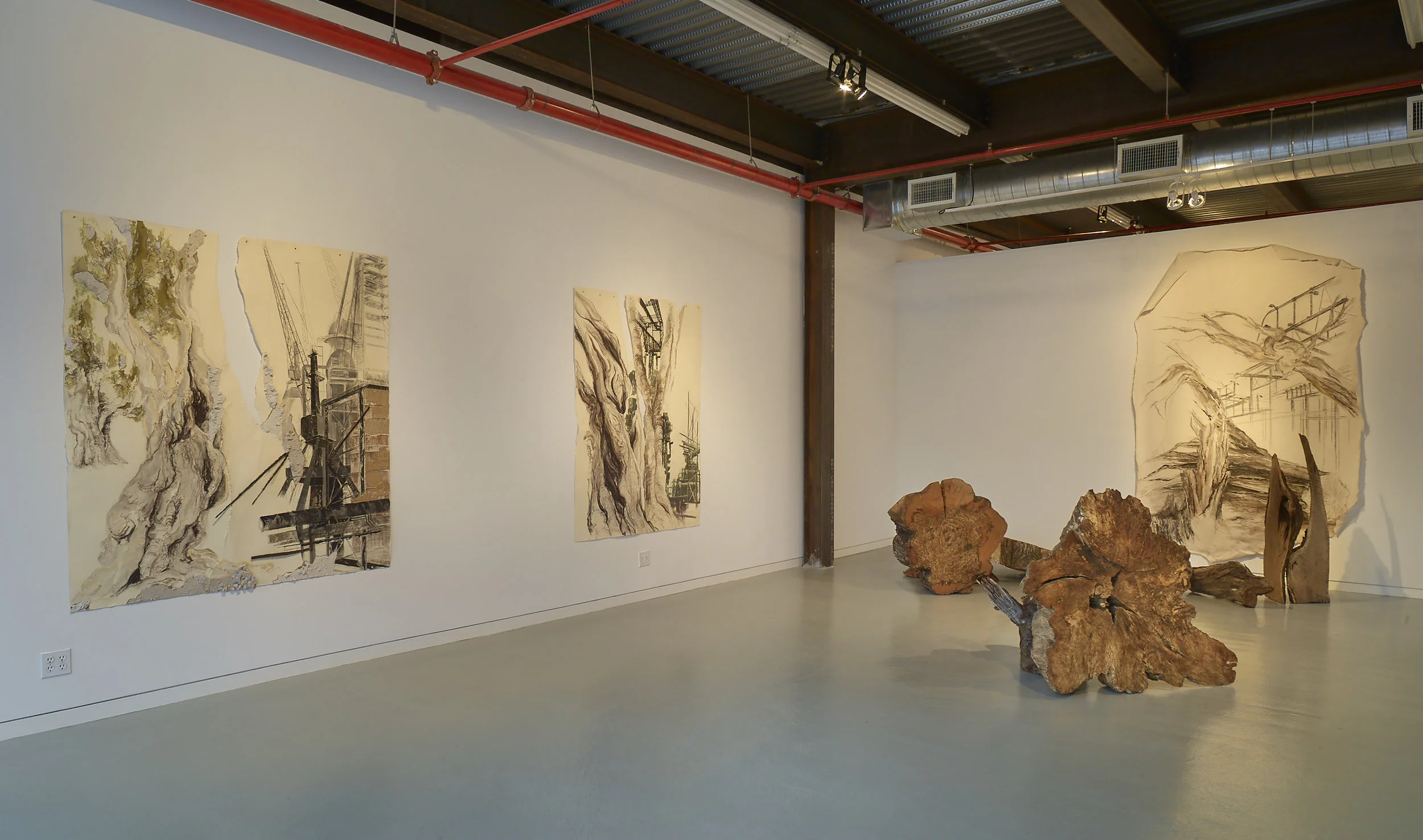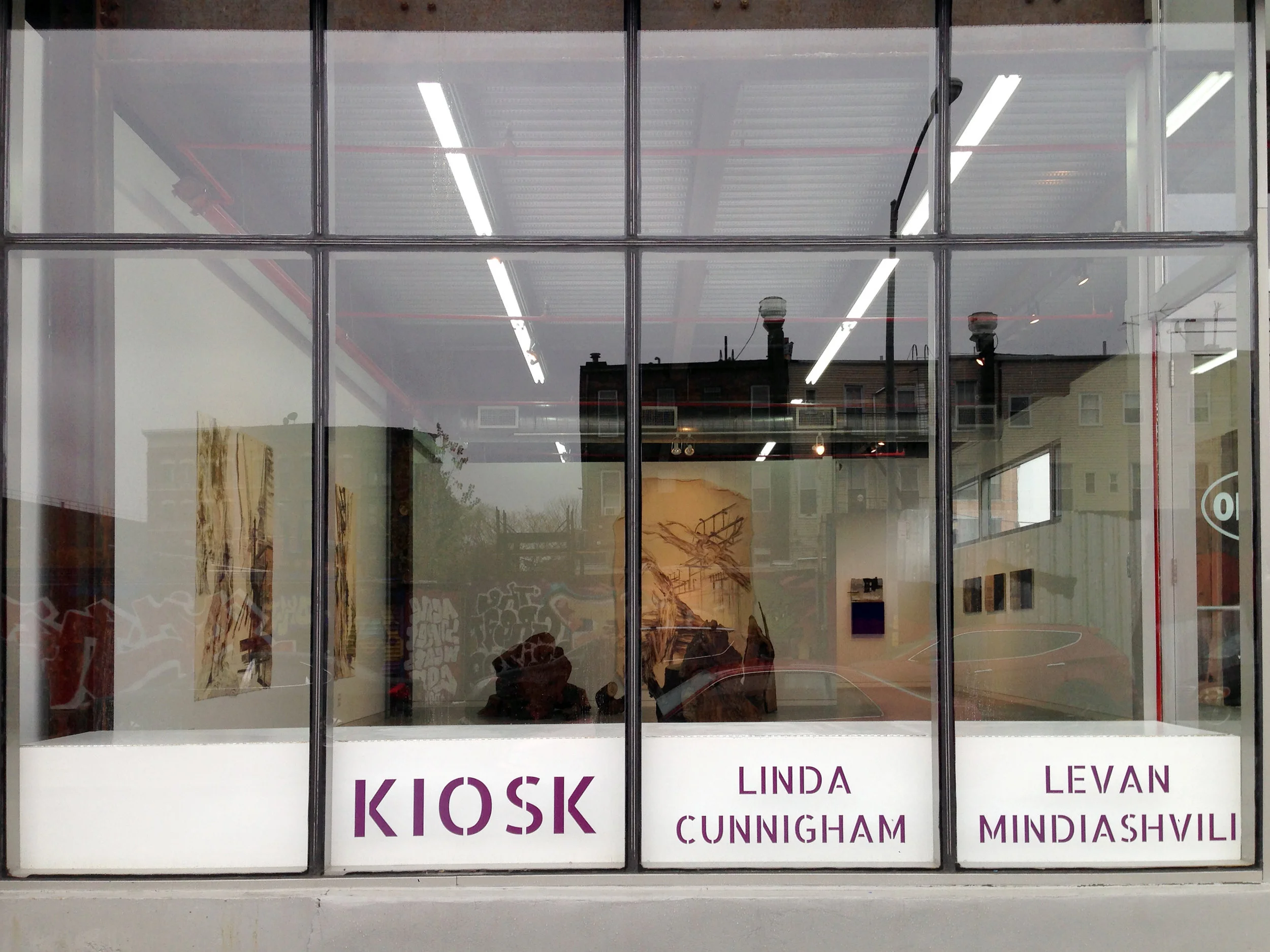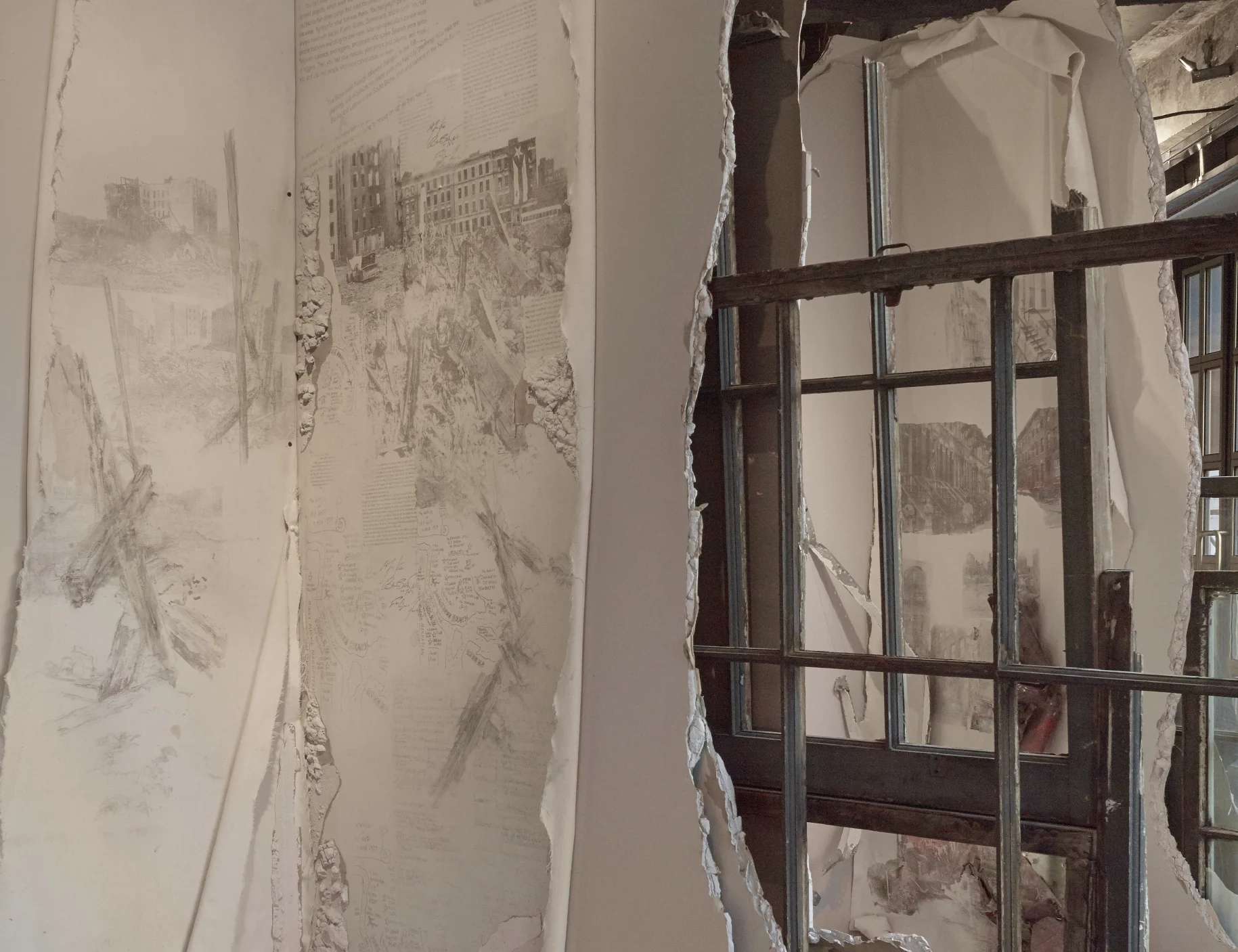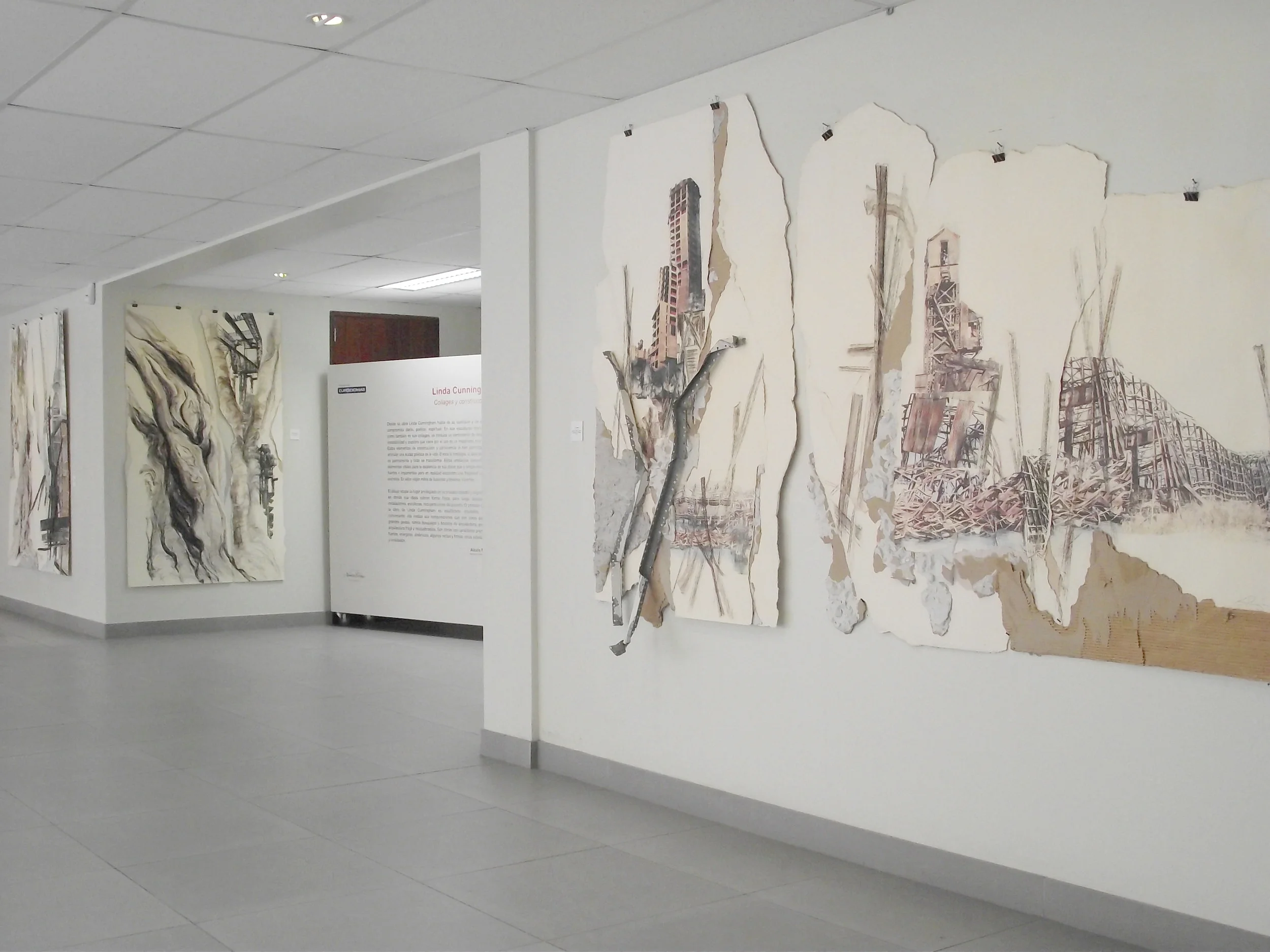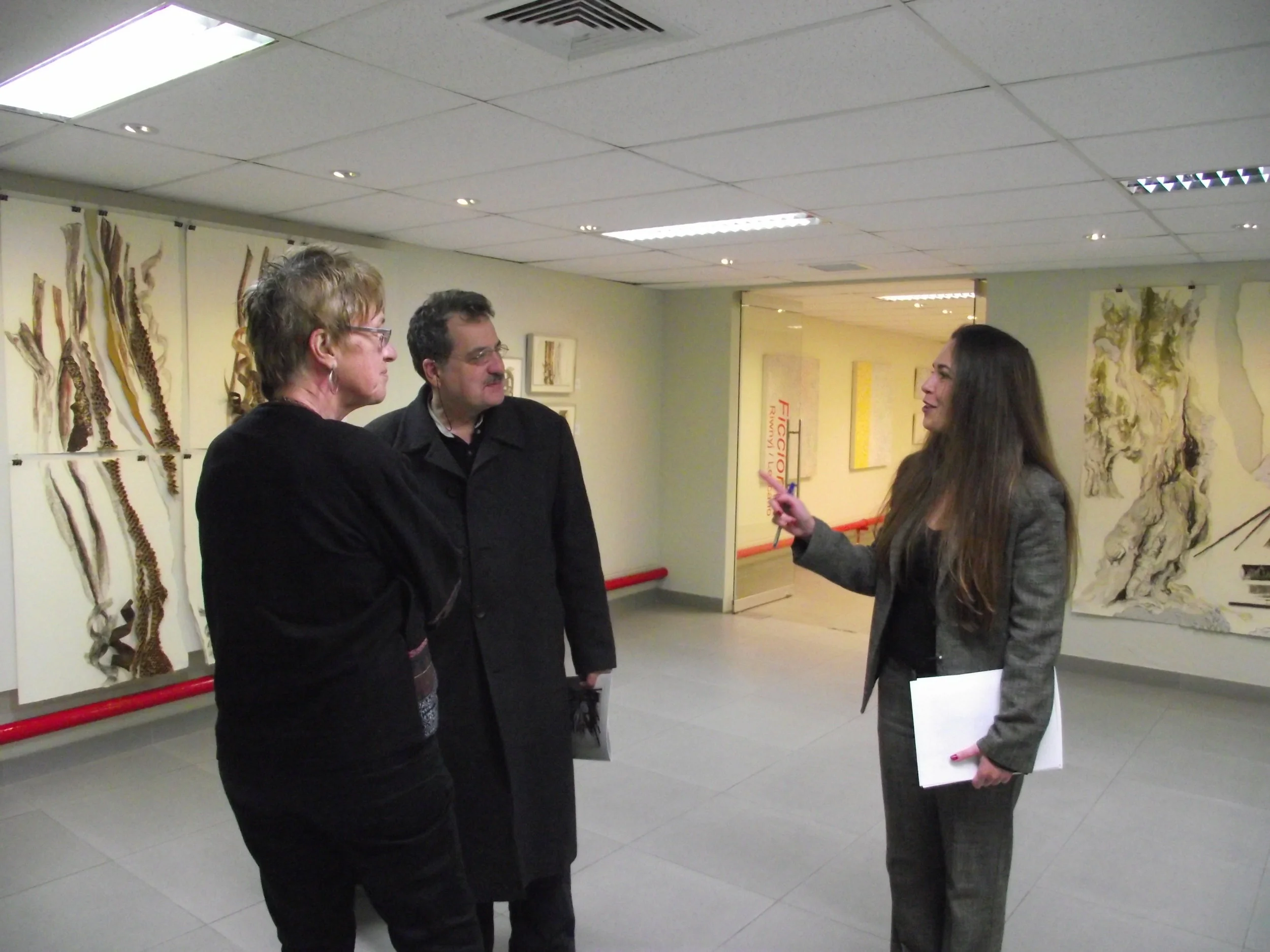'My work centers upon time, transience and contradictions.'
Layers of dry-wall panels with broken edges are assembled to stand like an open book, stretching through the gallery space, a metaphor of an “old story.” The broken walls stretch up to 9ft in height, and construct a context for golden bronze shapes that appear like unexplainable treasures next to the images of ancient texts of the Abrahamic religions from 10 Centuries of peaceful co-existence and a prayer written in Hebrew in 1945 and carved in a free-standing wood wall. Historic authentic border posts and barbed wire from the former East German border stand nearby among broken curved cement forms that capped the walls preventing escapees from scaling the cement walls.
Somedrywall “pages” of the book with seemingly abstract brown and rust colored photo-transfers on bifurcated sheets of canvas echo actual elements in the installation, unraveling underground copper cable that formerly operated the deadly machine guns and mercury lights guarding the former East German border. Canvases are also collaged with metaphoric rubble, acrylic and pastel.
The “old story” is collaged with golden bronze fragments on the book-like dry-wall wall structure In another area with photo-transferred images of ancient Arabic, Hebrew, Coptic and Greek texts.The historic texts from the years 2 to 11 are framed by dramatic golden, 6ft high textured bronze forms.
A phrase from a spiritualin my memory“…and the walls came a tumbling down” refers to the book of Joshua in the Tanakh or in Christian liturgy, the Biblical Old Testament about Joshua and the battle of Jericho, These images from 10 Centuries of peaceful co-existencejuxtaposed with the hopeful structures of collapsing barriers evoke hopeful possibilities in this era of devastating conflicts between the followers of Abrahamic religions.








